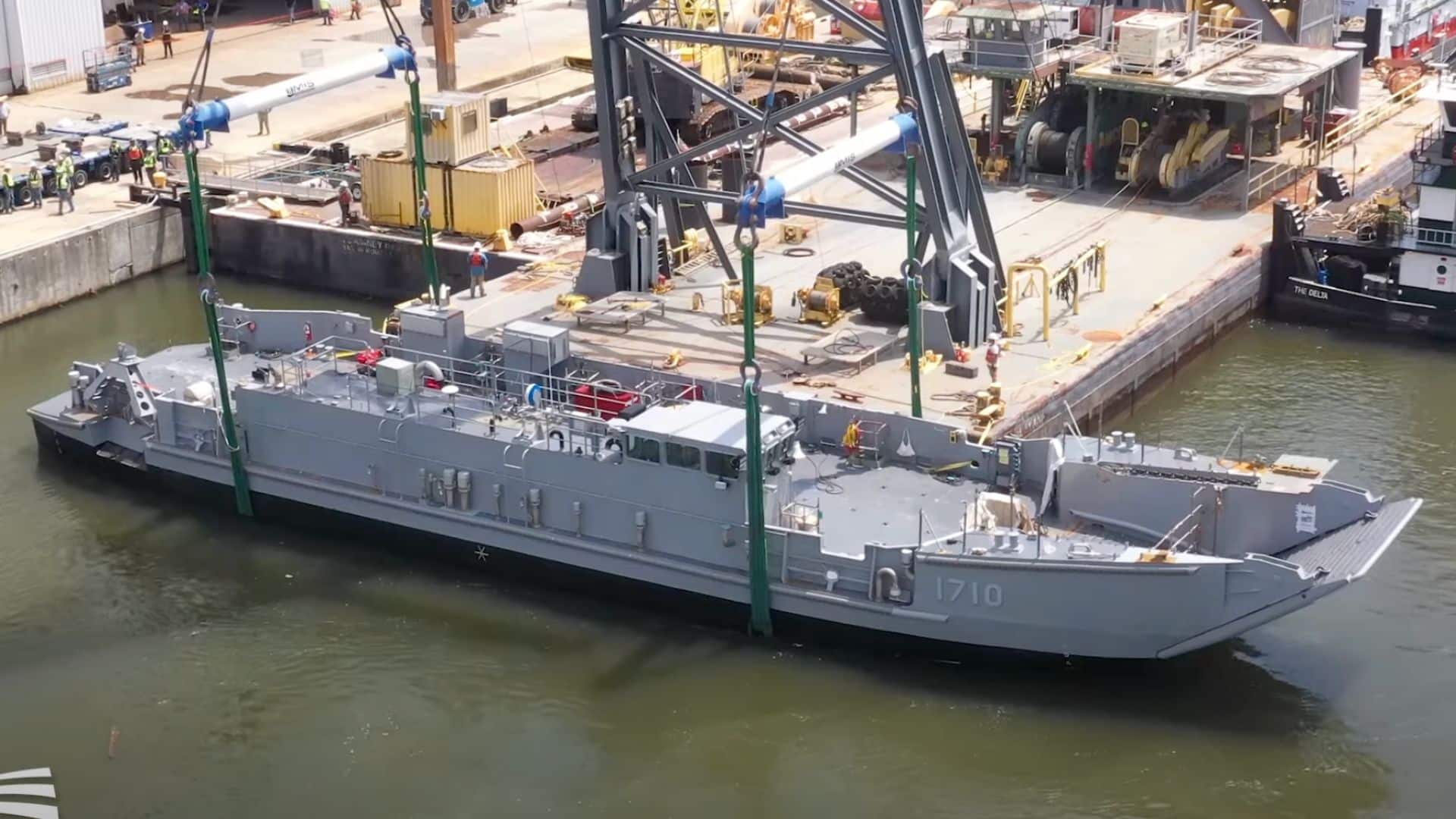US Navy launches monster assault ship with 1.2 million-pound payload capacity
Austal USA Launches First LCU Vessel for Navy

Austal USA has made significant strides in its steel shipbuilding capabilities with the launch of its first Landing Craft Utility (LCU) vessel for the U.S. Navy. The LCU 1710 was unveiled on August 22 at the company’s facility in Mobile, Alabama. This launch marks the beginning of a $91.5 million contract awarded in 2023 for a total of 12 vessels, with three currently under construction and work expected to continue into the next decade.
Significance of the LCU Program
Michelle Kruger, President of Austal USA, expressed pride in the LCU program team for reaching this crucial milestone. She emphasized the importance of the LCU program in supporting expeditionary operations for both the Navy and Marine Corps. These vessels are essential for transporting vehicles, cargo, and personnel from amphibious assault ships to shore, thereby facilitating military operations.
The LCU 1710 is a formidable craft, capable of carrying over 1.2 million pounds—significantly more than the Air Force’s C-17 Globemaster, which has a payload capacity of 170,900 pounds. The Navy has relied on LCUs since the 1950s, and the aging LCU-1610 class is now being phased out. The new LCU-1700 class is designed to be larger and more efficient, replacing its Cold War-era predecessors. Each vessel measures 139 feet in length, can displace approximately 425 tons when fully loaded, and accommodates a crew of 13 sailors. It can transport two M1A1 Abrams main battle tanks or 350 fully equipped troops.
Designed for endurance, the LCU 1710 can reach a top speed of 11 knots and has a cruising range of 1,200 nautical miles (1,400 miles).
Austal USA awarded contract modification for two additional Landing Craft Utility (LCU) for US Navy
Expanding Shipbuilding Capacity
The recent contract awarded to Austal positions the Alabama shipyard as the Navy’s second source for new landing craft, complementing Swiftship, based in Louisiana, which received the initial development contract in 2018. The Navy’s original plan included the construction of 31 heavy landing craft to support amphibious operations, although production will depend on congressional funding and changing requirements.
Kruger noted that advancing the LCU program enhances the Navy’s industrial base. She stated, “Each milestone achieved shores up our position as a key contributor to the strength and success of the maritime industrial base.” The LCU program is one of three shipbuilding initiatives currently in serial production at Austal’s Mobile yard.
In addition to the LCUs, Austal is also constructing three Navajo-class Towing, Salvage, and Rescue ships (T-ATS) for the Navy, along with two Heritage-class Offshore Patrol Cutters (OPC) for the Coast Guard. Originally an Australian company specializing in aluminum warships, Austal has expanded its operations to include steel production, allowing it to pursue various contracts, including design work for the Navy’s future T-AGOS(X) ocean surveillance ship.
The company secured a $144.6 million contract in 2021 to build two Navajo-class rescue ships and is well-positioned to compete for additional contracts as the Navy continues to invest in auxiliary vessels and support craft. The launch of LCU 1710 represents a significant advancement in Austal’s shipbuilding efforts and the Navy’s ongoing modernization of its landing craft fleet.
